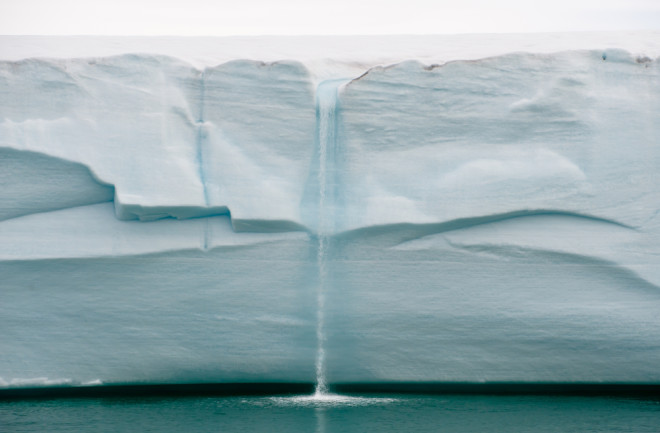The statistics are grim. Collectively, the Antarctic and Greenland ice sheets lose around 427 billion metric tons of ice a year on average. That’s more than 1.1 billion tons every day. The water from those liquefying ice sheets pours into the oceans, inching sea levels higher and higher.
There’s little sign that the melting of the ice caps will slow any time soon. If anything, it’s going to get exponentially faster, scientists say. Like the glaciers themselves, it’s a process that begins slowly but carries with it a terrifying momentum.
The ice caps store 99 percent of all the freshwater on Earth. It is a staggering amount of water, and the significance is readily apparent if you’ve ever stood on the shore of one of North America’s Great Lakes and gazed outward to the watery horizon. All that water, enough that it appears to be an inland sea, is but a fraction of what’s carried within the solid bulk of Antarctica.

